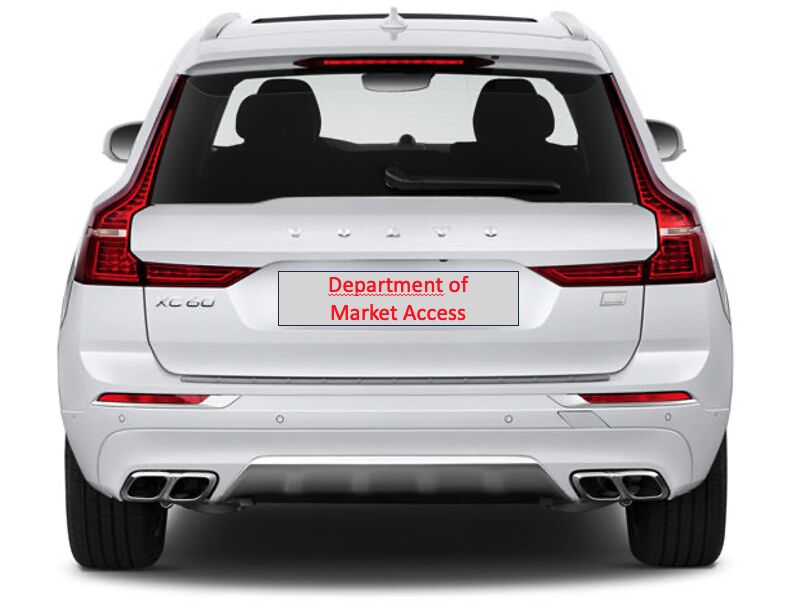Pulse of Innovation: HealthTech @automatica

19.05.2025 Pulse of Innovation: HealthTech @automatica Pitch. Connect. Scale.Pitch on a global stage at automatica. Munich MedTech invites you to an exclusive event at automatica, where we spotlight the next generation of HealthTech innovation — and the strategies that will bring it to life in the German healthcare system. Our mission is to empower early-stage startups through C-level Management-as-a-Service, providing the strategic and operational expertise needed to navigate complex regulatory, clinical, and commercial landscapes. What to ExpectWith a strong focus on enabling innovators, this event fosters direct exchange between founders, investors, clinicians, and industry experts. It’s a space where insights become action — and where startups gain the clarity and connections to: Showcase innovation in robotics, diagnostics, and digital health Connect with investors and healthcare leaders Accelerate market entry with tailored guidance and strategic alignment By bridging early-stage challenges with real-world expertise, we help startups reach the market faster, more efficiently, and with lasting impact. Join us at automatica and be part of a community that’s not just imagining the future of healthcare — but building it. Register under: Link or reach out if you have questions contact@ar2-c2.eu to the exhibitor page contact us Back to expert center
What´s the real added value of a PRRC?

18.05.2025 What´s the real added value of a PRRC? The Person Responsible for Regulatory Compliance (PRRC) is a role defined in Article 15 of the Hashtag#MDR and Hashtag#IVDR. It sounds official, and it is, but what value does the PRRC add to an organisation? Many people assume the PRRC is someone who ???????????????? all the compliance tasks. But that’s not quite right. For example, the PRRC must ensure that the declaration of conformity has been drawn up. But drawing it up and signing it? That might be part of another role. The PRRC doesn’t create the declaration. Instead, they verify that it exists, that it contains the correct information, and that it’s been signed by the right person (and no, that’s not necessarily the PRRC either). And if the person with the role of PRRC does all this, they’re doing so from another role. So what does „ensuring“ really mean? It means being the final checkpoint; the person who knows where to look, what to question, and when to speak up.For upper management, this role is essential. A strong PRRC means that leadership can: Be confident that their devices are (and remain) market-ready Sleep better knowing someone is tracking compliance risks proactively React in time when something goes wrong, because someone is watching closely and knows what to do Know that the person with an ear to the ground on the work floor reports directly to them This isn’t just about regulatory requirements. It’s about trust, timing, and business continuity. That’s why we need to rethink the title. Rather than referring to the PRRC as some bureaucratic function, let’s call them what they really are: Captain Confidence: The one who keeps the ship steady when regulations shift. The one who verifies that what’s supposed to happen, actually happens. The one leadership can rely on to warn about an issue long before it becomes a problem. Of course, every PRRC has to earn that title by stepping up, speaking clearly and keeping compliance policies on track.Let’s be honest: the role deserves more recognition and more clarity. So here’s to you, the Super PRRC out there, or should we say… Captain Confidence. contact us Back to expert center
Should we rephrase the concept of „Post-Market Surveillance“?

17.05.2025 Should we rephrase the concept of Post-Market Surveillance? My recent suggestion to rebrand RA/QA into Market Access (MA) sparked some great discussions. The key idea was simple: by reframing the name of a department to reflect its true value, we also reshape how it is perceived — internally and externally. Let’s apply the same thinking to another, often misunderstood area: Post-Market Surveillance (PMS).With the rise of new regulatory requirements in the EU, the US, and globally, more companies are establishing PMS functions or assigning responsibility for it to individuals. That’s a good thing — but let’s be honest: the name “Post-Market Surveillance” doesn’t exactly inspire much enthusiasm.It sounds reactive. Like we’re grudgingly watching something from afar because the regulators told us to. It feels like compliance overhead. But what if we thought about PMS differently?At its core, Post-Market Surveillance is about understanding how a device performs in the real world, long after it leaves the production line. It’s about knowing whether it works as intended — not just in theory or in a controlled trial, but in hospitals, homes, and clinics. It’s about identifying opportunities for improvement and ensuring that what we’ve built continues to meet real patient needs.In short, PMS is about Patient Satisfaction.That’s what patients truly expect. Not only that a device is safe and performs as promised, but it continues to do so over time, and it remains state of the art. That their feedback matters. That risks are monitored. That their experience counts. Imagine the shift in mindset that would happen internally if the PMS function were renamed the Department of Patient Satisfaction (PS). Suddenly, PMS is no longer just about ticking regulatory boxes. It’s about owning the patient experience. It’s about giving product teams and leadership real-world insight. It’s about actively improving quality, safety, and innovation over time. And yes, it’s still fully aligned with regulatory expectations. It may even exceed them. This reframing also elevates the strategic importance of PMS within the organisation. It becomes a bridge between patients, regulators, engineers, and executives. The Patient Satisfaction Department is forward-looking, providing valuable insights to company management. This isn’t just about changing a label. As with RA/QA becoming Market Access, it’s about changing the role’s identity — from gatekeeper to enabler, from auditor to advocate, from box-checker to value creator.Post-Market Surveillance is not a burden. It’s a gift. A direct line to the people we ultimately serve.So maybe it’s time we call PMS what it really is. Patient Satisfaction. contact us Back to expert center
Why the RA/QA Department Should Change Its Name

16.05.2025 Why the RA/QA Department Should Change Its Name In many medtech and pharma companies, Regulatory Affairs and Quality Assurance (RA/QA) is seen as a cost centre. It’s the team that slows things down, introduces procedures, and asks the tough questions — the kind that challenge timelines and force rework. But those questions prevent bigger problems later. They ensure what’s built can be approved, not just imagined.That’s not overhead. That’s enablement. RA/QA protects the business from regulatory risk, ensures audit readiness, and supports fundraising or acquisition due diligence — all in service of a single goal: to get to market and stay there.That’s why it’s time to reframe the department’s identity: call it the Department of Market Access (MA). This isn’t just semantics. It’s about strategy, identity, and value recognition. Market Access better reflects the mission: enabling product launch, supporting scalability, and aligning development with regulatory expectations. It encourages cross-functional collaboration, because everyone shares the same goal: Getting products in the hands of patients and users. It also encourages early involvement. RA/QA is too often brought in at the end, as a final hurdle. A Market Access mindset moves regulatory thinking upstream, leading to smarter planning and fewer delays. Especially in startups, renaming this team Market Access sends the right signal: this isn’t back-office bureaucracy. It’s a driver of success. The tasks stay the same — documentation, audits, post-market surveillance — but the framing changes. The name “Market Access” shows this team is not a barrier, but an enabler. It supports speed, scale, and sustainability.Let’s stop calling it RA/QA. Let’s call it what it really is: Market Access. What do you think? Leave your comments below. contact us Back to expert center
This week something new: Data governance

This week something new: Data governance.
Much like the traditional wedding adage of „something old, something new, something borrowed, something blue,“ the merging of the AI Act with the MDR holds similar symbolism.
AI Act and MDR merge: this week something old, promoting inovation or burocracy

The AI Act is published at the official journal of the EU. From that moment, the clock starts ticking for all AI-based software manufacturers. But what about medical devices that utilize AI-based software?
EUDAMED and UDI

18.10.2023 EUDAMED and UDI EUDAMED is the IT system established by Regulation (EU) 2017/74) on medical devices and Regulation (EU) 2017/746 on in vitro diagnosis medical devices and developed by the European Commission. A device identification system based on a unique device identifier (UDI) allows easier traceability of medical devices. Really, EUDAMED and UDI are in essence quite straightforward concepts. But the grouping of devices into Basic UDI-DI device families is essential to make your registrations work, and also for organizing the technical documentation of your full portfolio. Companies that seek confirmation regarding their grouping, can reach out for a short check. This can best be setup by a limited ad hoc budget. If you want to see how to group devices into device families, or need support with the EUDAMED registration feel free to reach out. contact us Back to expert center
The strategic importance of the Basic UDI-DI

18.10.2023 The strategic importance of the Basic UDI-DI The strategic consequences of specific Basic UDI-DI groupings A Basic UDI-DI groups devices with the same intended purpose and the same essential design and manufacturing characteristics into device families. Within this context a company can chose to apply various levels of granularity. This freedom should be used with great caution, because each option has its own consequences. For example, large device families will keep the numbers of sets of technical documentation down, but the individual documents may increase in complexity. A UDI-DI can only be linked to one Basic UDI-DI. This also means that a change in the Basic UDI-DI triggers a change in the UDI-DI. If a Basic UDI-DI is linked to a UDI in another market, a change there will also trigger a change in the UDI-DI. So it is strongly recommended to have identical device groupings for UDI purposes globally. The MDR has the strictest Basic UDI-DI requirements, in almost all cases other markets can follow that same structure. It is therefore important to pay sufficient attention to defining the Basic UDI-DI device groupings, and preferably start there. Below you can read how the Basic UDI-DI is used and what the consequences can be of certain choices. This is where the Basic UDI-DI goes The MDR and IVDR specify that the Basic UDI-DI must appear on: The Declaration of Conformity (MDR Article 27(6), IVDR Article 24(6)); For Class III and Class llb implantable medical devices as well as IVD’s of Class D and Class C companion diagnostics the Basic UDI-Di must listed on the product certificate; The Summary of Safety and Clinical Performance, required for Class III and implantable devices, and the Summary of Safety and Performance, required for Class C and Class D IVD’s; The Basic UDI-DI is also required for a Certificate of Free Sales; On top that, the device description in the technical documentation must be identified by the Basic UDI-DI. This implies the Basic UDI-DI is used to link a device to specific documents and vice versa. This is how the physical reality of a device in all its interactions with patients and other users is related to the paper reality in the regulatory world. One to one, one to many, many to one With the Basic UDI-DI as the key identifier of a grouping of devices in EUDAMED, it is obvious that all related documents should also be identified by that Basic UDI-DI. From a legal perspective, it is possible to have multiple Basic UDI-DI linked to a single technical document. For example, a clinical evaluation report may list more than one Basic UDI-DI. However, from a practical point of view there may be risk of inconsistencies and increased complexity if the risks are weighed against the clinical benefits of devices with different intended purposes and/or essential design or production characteristics. Therefore it is recommended to apply as much as possible a ‘one to one’ strategy: in most cases there is exactly one Basic UDI-DI mentioned in relevant parts of the technical documentation. There are some exceptions, like for example MDCG Guidance 2022-7 on Questions and Answers on the UDI System in question B5 sets out that a Declaration of Conformity (DoC) can reference multiple Basic UDI-DI’s. However, that same question also sets out that ‘the same Basic UDI-DI can be referenced in more than one DoC’. Two DoC’s may be signed on different dates, it is obvious this may be confusing. It might be better to add a product addendum to the DoC with the details of the individual models and add new models, falling under the same Basic UDI-DI, with an extra addendum. That provides clear linking to a single DoC and relevant technical documentation and also provides clear information from when the individual device was CE-marked. Level of granularity With the above ‘one to one’ leading principle for documentation in mind, the level of granularity of the Basic UDI-DI is another strategic issue. There is some room for companies to play with. On the one hand, they may go for a high level of granularity with narrowly defined device groupings and also a high number of sets of technical documentation, each addressing a limited selection of devices. On the other hand, they may go for wider defined groupings, with fewer sets of technical documentation that each handle a large number of devices. This is something to carefully consider. For example, a company has grouped all devices into one, very widely defined Basic UDI-DI. They decide to change something in one device that would require a new Basic UDI-DI. That means that either this device must be removed from the grouping and have its own Basic UDI-DI, or all devices will get this new Basic UDI-DI. A new Basic UDI-DI means a change in the UDI on the label and such change will in most cases also have an impact on UDI’s on other markets. This is why we usually recommend a high level of granularity in the Basic UDI-DI and where possible just copy parts of the technical documentation that can be copied. Narrow, well defined device groupings often allow for flexibility in device changes, so the Basic UDI-DI structure will not be something that is limiting innovation Strategic considerations Still, with the above in mind, there could be good grounds to go for larger device families. To do that, you must apply a holistic approach and assess the full character of the company. Obviously, that is highly individualized for each organization, but there are some key considerations to go either way: If a device family is mature and on the market for quite a while, changes in the device will most likely come in small incremental steps and major breakthroughs will result in a new Basic UDI-DI, this is a typical good reason for a large grouping; In case a device is controlled by software and the impact of the software in the diagnostic or therapeutic process is significant,
Notified body search and selection

18.10.2023 Notified body search and selection Regulation (EU) 2023/607, ammending the MDR, allows more time for the notified bodies to certify their companies. However, manufacturer must have entered an application with a notified body by 26 May 2024 in order to keep the legacy status of their devices. For companies that are still looking for a notified body, it is the highest time to find the right notified body. Preparation Companies should ensure they are sufficiently ready to face the first level of scrutiny by a notified body by the time they reach out. Perfection is not yet necessary, but one should be close. For first-time companies this can be intimidating and they may appreciate guidance and confirmation from an expert. Profiling AR2-C2 can help companies profile themselves, taking into account their future plans, and match that profile with the profiles of notified bodies. There are some well known notified bodies, but there may be others that could be a better match for the company. Making a successful match involves more than checking notified body designation codes. Connecting In a next step the company must reach out to notified bodies. Although they all have their standard procedure for inquiries, there is still some bandwidth to make a difference during the first impression. Then there are follow up calls, further exchange of information. All that communication must be done with the bigger picture in mind, resulting in a consistent and clear message to the notified body. Here too, support from an expert helps. Get help If you want expert support connecting with a notified body, reach out for a first call in which we can assess where you stand and what could be a good regulatory strategy. contact us Back to expert center